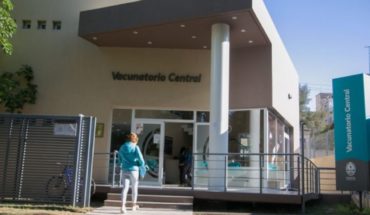Contrary to the perception that seems to have been installed in recent years, our ports of San Antonio and Valparaíso, far from being competitors, are two complementary links of what we could call our “Port Region”, a key logistics and strategic pole for Chile that also includes Ventanas and Los Andes.
At a time when our port companies commemorate 25 years since they were created by law as territorial successors of Emporchi’s legacy, it is necessary to endorse this fact: both ports, the main ones in the country, are called to collaborate and look to the future hand in hand, as part of a logistics platform on which more than 60% of Chileans depend.
Almost everything that Chile produces and almost everything that Chile needs to function, passes through the terminals of Valparaíso and San Antonio. 2 out of 3 containers that enter and leave our borders transit through here; Our appliances, our food, our vehicles enter here. From here our country connects its business with more than 64 countries and our products, copper, our wines, our fruit and many other exports leave.
This current role of San Antonio and Valparaiso, by the way, is due in large part to the work done in these 25 years by our predecessors and that we hope to continue. Both port companies, hand in hand with successive strategies promoted by the Ministry of Transport and Telecommunications (MTT) and the System of Public Companies (SEP), have been transformed in terms of competitiveness, efficiency, technology and specialization thanks to the constant effort of our teams and the concessionaires who played it with us.
Our development has also been nourished by the common port history of Valparaiso and San Antonio, which dates back to colonial times, continued at the dawn of the Republic and remains today, and we have pushed it into the future. With the entry of our first dealers, TPS and STI respectively, then a new modernizing wave (today expressed in ZEAL and TPV, in addition to DP World, Puerto Panul, Terquim and Policarpo Toro), our ports have responded to the growing demands of foreign trade, as our economy was opened to the world.
Likewise, because a port is also built together with its users, its actors and, above all, with the cities that host it, we have advanced in collective collaboration models that are expressed, for example, in our port communities.
-COLSA and FOLOVAP-, and also in the different channels and spaces for dialogue and conversation with neighbors, territorial institutions and communities, in general.
Today we also share challenges, which we must address together and under a common strategy: expand our infrastructure to face the challenges of the future, attending to local realities and national needs, thus contributing to the consolidation of the central macrozone as a logistics-port pole and strengthening tourism facilitating the attention of cruise ships. We are also called to establish new standards for the port-city relationship in environmental and heritage issues, in the economic-labor relationship with our citizens and, in addition, enhancing the vocations of our territories, their sustainability, their seals and, why not, their feelings: to be able to be a source of legitimate pride for porteños and sanantoninos.
Surviving the historical role we have had as the great ports of Chile will continue to be our north. Our country today needs more port infrastructure in the Region and this requires engines of reactivation and social welfare for its population: Puerto San Antonio and Puerto Valparaíso, both rooted in the history and identity of their territories, we have worked for 25 years to achieve it, and we will continue to do so.
At the end of the day, ports move cargo and containers, but we also move our territories and provide opportunities for our people who support us on a daily basis.
Follow us on
The content expressed in this opinion column is the sole responsibility of its author, and does not necessarily reflect the editorial line or position of El Mostrador.





